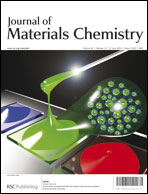Sol–gel immobilized ovarian follicles: collaboration between two different cell types in hormone production and secretion
Abstract
The immobilization of mammalian cells within semipermeable matrices which allow retention of viability and functionality has recently attracted research interest. In this study, rat mature ovarian follicles were encapsulated in sol–gel


 Please wait while we load your content...
Please wait while we load your content...